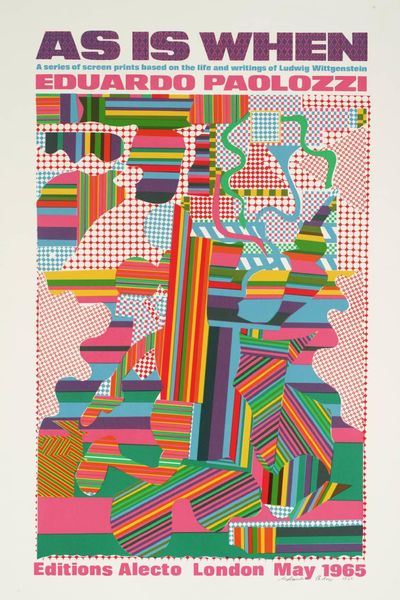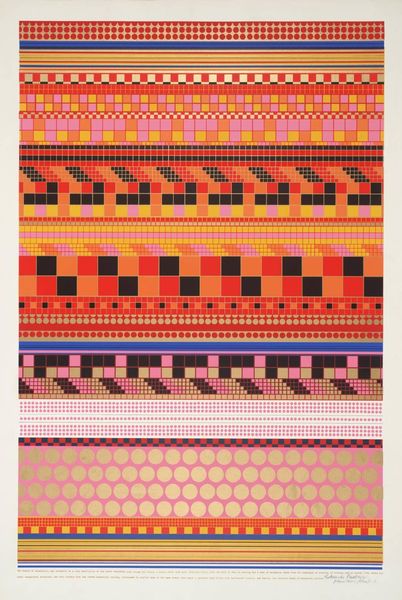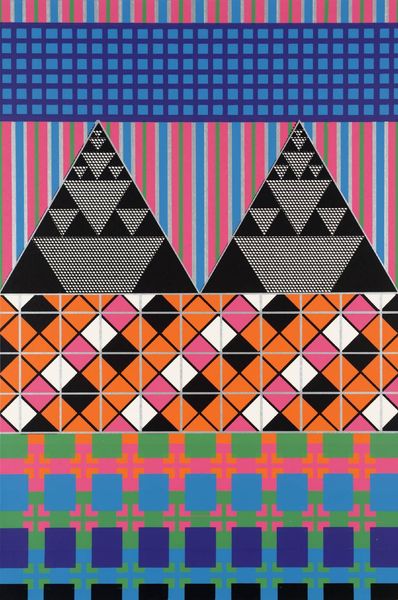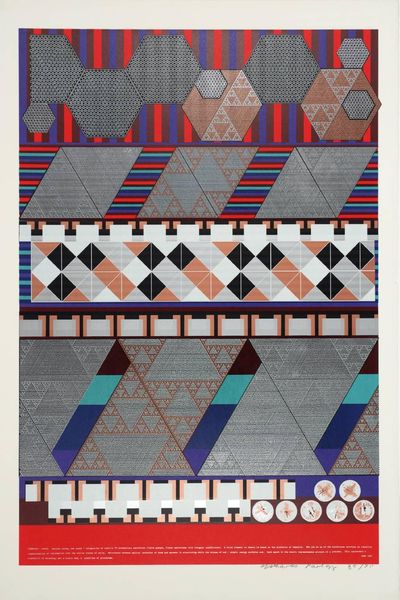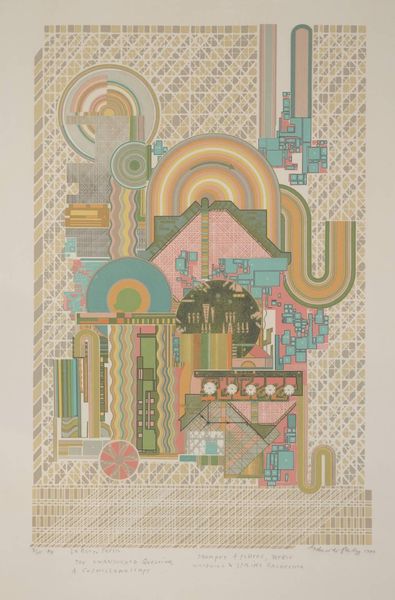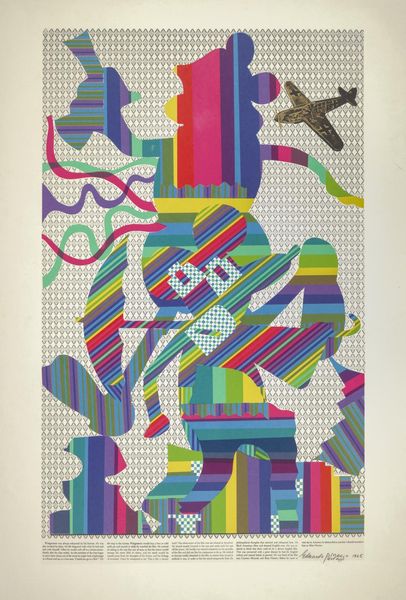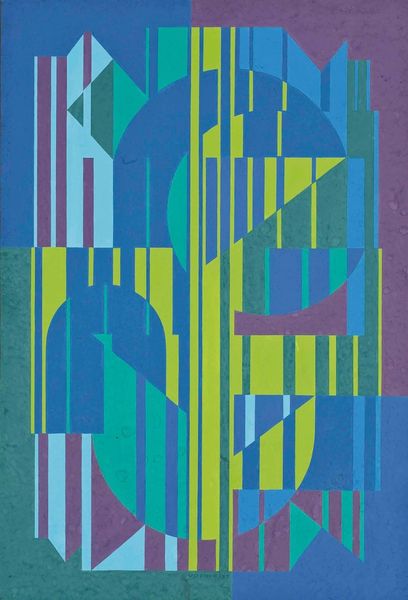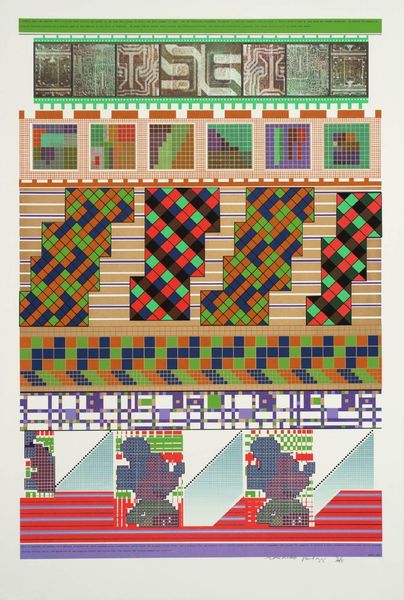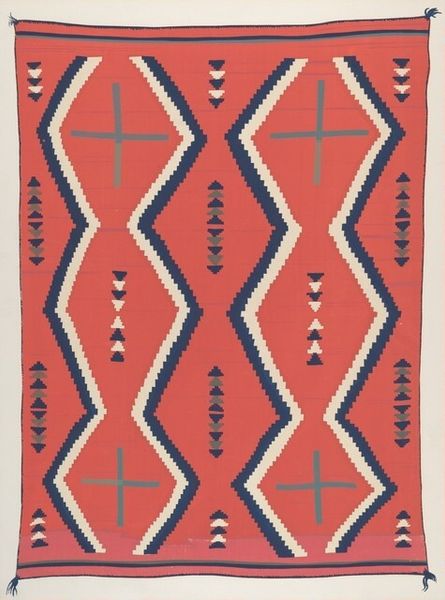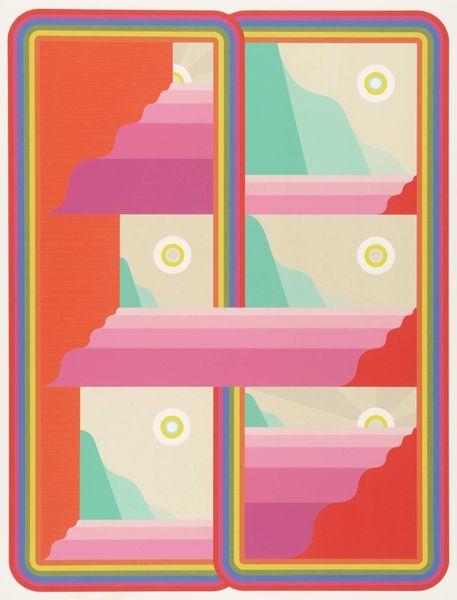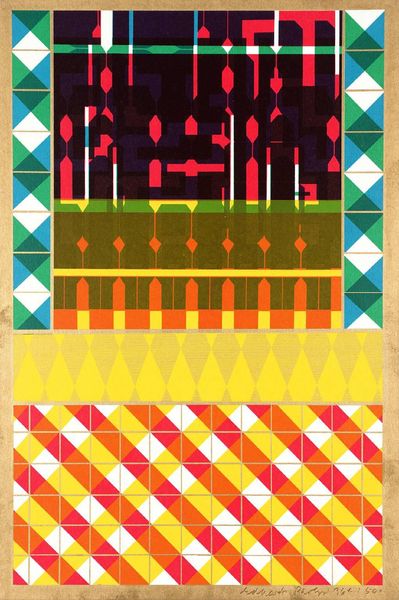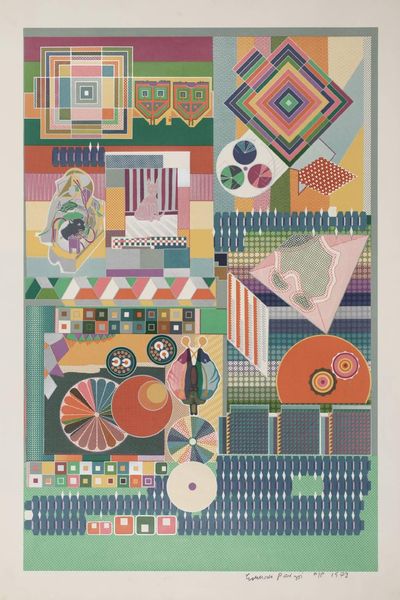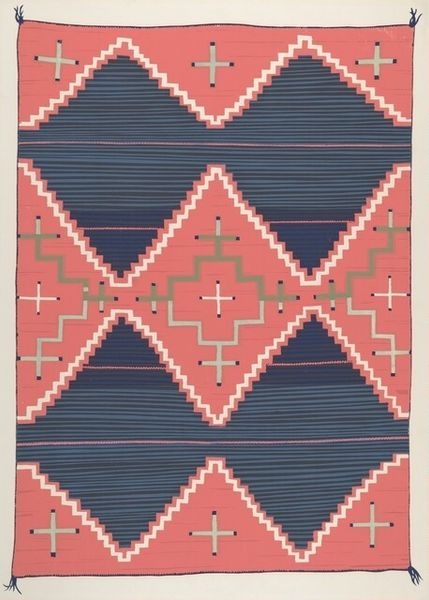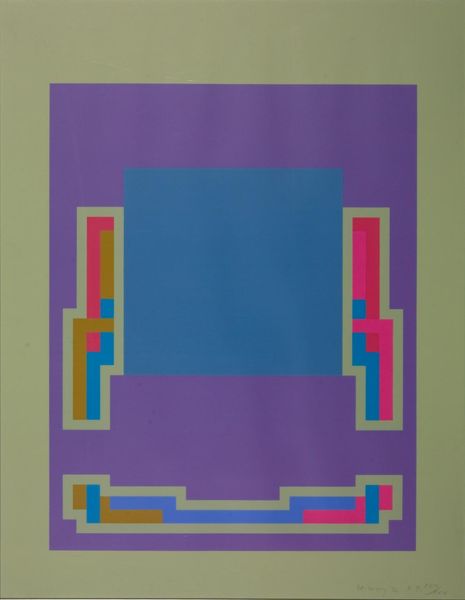
Dimensions: image: 816 x 510 mm
Copyright: © The Eduardo Paolozzi Foundation | CC-BY-NC-ND 4.0 DEED, Photo: Tate
Curator: Immediately striking—the colours are so vibrant, and yet the geometric forms feel surprisingly static. Editor: You're right. Sir Eduardo Paolozzi created this print, titled "Assembling Reminders for a Particular Purpose," its precise date is unknown, but it resides in the Tate collection. He seems to be building a world from pure visual elements. Curator: Yes, there’s something distinctly symbolic in the repetition. Those shapes—the mountains, the jigsaw-like forms—could represent fragmented memories or a constructed reality. There's a sort of coded language happening. Editor: I see that. Note how the varying patterns create different textural effects, despite being a flat image. Paolozzi’s attention to detail, the meticulous arrangement, speaks to a structural, almost architectural approach to image-making. Curator: The overall impact is one of complex interrelation. It reminds me of how cultural narratives are assembled from individual pieces, each with its own history and resonance. Editor: For me, it's about how Paolozzi creates visual rhythm through contrast and similarity. It's a fascinating demonstration of how form can evoke feeling.
Comments
tate 7 months ago
⋮
http://www.tate.org.uk/art/artworks/paolozzi-assembling-reminders-for-a-particular-purpose-p04758
Join the conversation
Join millions of artists and users on Artera today and experience the ultimate creative platform.
tate 7 months ago
⋮
The life and theories of the Austrian philosopher Ludwig Wittgenstein inspired this sequence of screenprints. Each print includes quotations from Wittgenstein''s own writings or passages from a biography. The collages of fragmented images relate to these texts. Paolozzi has described the prints as ''a kind of combined autobiography''. His Italian background led him to identify with Wittgenstein as ''a foreigner in England'', who shared an interest in engineering and a love of cinema. He has also drawn parallels between Wittgenstein''s theories of language and his own artistic practice. Gallery label, August 2004
